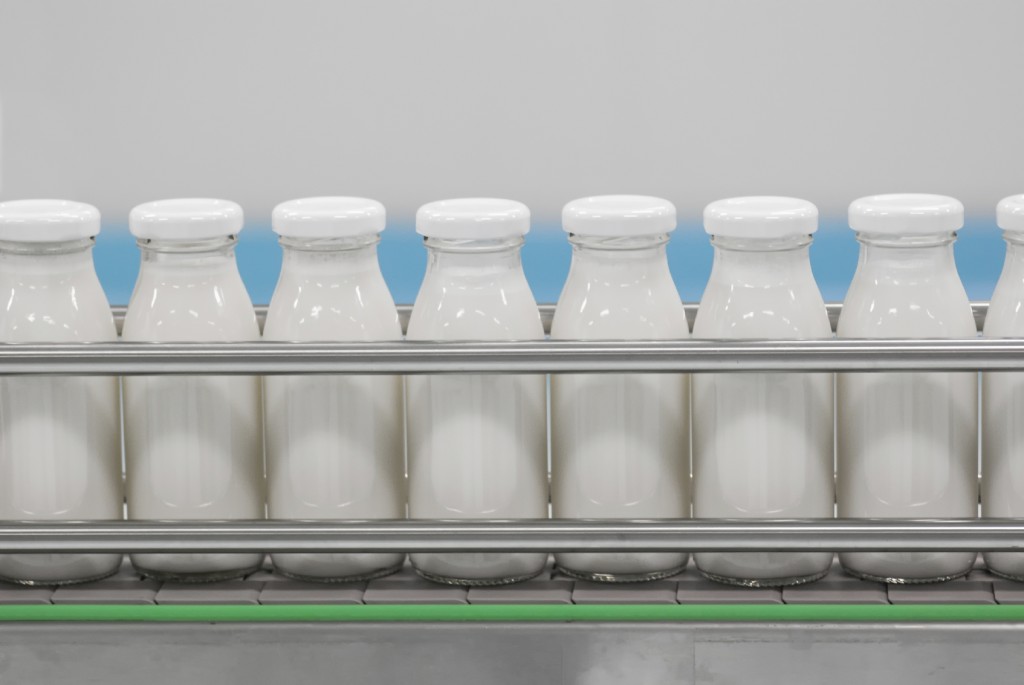
THE FRENCH
FOOD
INDUSTRY'S PORTAL
Webzine
taste it to info

Dairy Products : Opportunities in the Chinese Market
News /
Friday 12 June 2015
How would you describe the Chinese market for dairy products?
The culture of dairy products is relatively new to China, but the market has been undergoing strong development for the past 15 years. This change is linked to two factors:
– First, there’s been rise in public awareness about the nutritional value of dairy products
– Second, the market has opened up to other food cultures and foreign products.
It’s also a market that has suffered several food scandals (in particular, one involving melanin) and food safety has become a primary concern. Chinese consumers indeed find this safety in imported dairy products.
What type of dairy products can be found in China?
Dairy products have become more and more diverse are aren’t limited to milk and yogurt. For example, there is large market opportunity for cheese. Today, China imports nearly 40,000 tons of cheese a year, 4 times more than it did in 2006! Experts predict a 58% growth in import volume between now and 2017.
Above all, you can find above all mild or flavoured cheese, and some high end hard cheeses like Emmental or soft cheese like Brie. Butter and cream don’t have a big market presence, except in large Hotel restaurants and high end stores or grocers specializing in imported products.
On the other hand, yogurt and liquid milk is omnipresent in small and large stores. Furthermore, China has several large local producers such as Mengniu and Yili, but customers still lack trust in the brands and remain suspicious of Chinese products.

Who are France’s competitors on the Chinese market ?
New Zealand, Australia and the United States are China’s premier partners in terms of dairy products. The cheese market, for example, represents 80% of all Chinese imports. This is explained by the fact that the above countries are large producers of processed cheese, used by industrial companies in the manufacturing of food products or local cheeses. The main European countries that export their products to China are: France (ranked n°1 for cheese), Germany and the Netherlands.
What are France’s opportunities on the Chinese market ?
Coupled with France is recognized for its high quality products and its art of gastronomy. The terroir , regional specificities and strict sanitary measures are much appreciated by Chinese consumers who are looking for safe and authentic products. Furthermore, 94% of Chinese consumers who have tasted French cheese said they would eat it again!
I think France has several cards to play on the Chinese market to develop its products :
– France has several large, international groups producing dairy products, but also very successful small and medium sized businesses in the sector: our expertise and our experience are an asset to highlight.
– Food safety is a real challenge, especially for products intended for children, so it’s a market that’s expanding. European and French regulations are a real guarantee of food safety, particularly for baby formula.
– Playing on wine and cheese pairings is really appreciated here: France produces both.
– Milk based drinks have started to appear in China and are certainly going to continue to develop in the market.
What advice would you give to a French producer who wants to export to China?
Start by learning about regulatory measures: in China, sanitary measures are strict and sometimes change without any forewarning of the changes. There are also constraints linked to additives and ingredients, compulsory information to put on the back label. Choosing an importer is also very important: he’s the local partner who will customs through some of these procedures. Be aware that it takes time for important clearance procedures. Yet with certain dairy products, it’s also critical to keep in mind that they have short shelf lives and need to be handled quickly. Managing stock and logistics is therefore a determining factor.
Next, figure out exactly what you want to sell, to whom and where. This is essential since you’ll need a real development strategy. China’s dairy product market is far less developed than that of Japan or Korea, so you’ll have to be that much more prepared. For example, cheese is still a niche market: consumers are found more often in large cities than in the provinces. Ask yourself about marketing and packaging: what works in France may not work in China. For high-end cheeses, it’s important to leave labels in French to capitalise on their origin (as well as a Chinese regulation label) since France is a guarantee of quality that attracts the consumer.
For products intended for mass consumption , one can, on the contrary, specially create Chinese packaging. In that case, there’s a lot of competition against local products intended for children and adolescents: there are supermarket aisles full of strawberry or chocolate flavored cheese. Unthinkable in France!
It’s often said that China is a difficult market, but it’s above all a different market. Most of all, it’s about knowing the local business habits, the market, and to have common sense. Don’t hesitate to call upon agencies that are already present in the country who can guide you in all aspects of marketing and promotion of your products.
How can we promote French dairy products in China?
It all depends on the product. For cheese for example, it’s necessary to do a lot of communications work about “how to eat cheese.” The Chinese don’t eat bread, even if there are local equivalents. It’s difficult for the French to imagine eating a bit of cheese without bread! We have to work on how to integrate the product into meals and to work with Chinese ingredients. Sopexa launched a campaign entitled “Les fromages, c’est la force” which aims to inform the Chinese consumer and introduce them to French cheese. We organized over 200 days of activities and tastings in stores located in Beijing, Shanghai and Guangzhou. Events intended for the culinary press have also been organized with famous chefs. Additionally, we’ve created an app for the iPad: 芝士就是力量 with recipes.
| The Chinese Market and France in NumbersEach inhabitant consumes 9.4 kg of liquid milk per year.
The consumption of butter, cream and cheese remains less than 0.2 kg per capita. China produces more than 36 million tons of cow milk per year. France exported 63,600 tons of dairy products to China in 2012 : – 12, 000 tons of milk and cream (2.5 times as much as in 2011) – 9,400 tons of powdered milk – 40, 000 tons of lacto serum – 771 tons of milk France is China’s fourth largest supplier of cheese: France exported 921 tons of cheese to China in 2012: that’s five times as much as in 2005. The main French cheeses sold in China are : – Processed (61%) – Soft (19%) – Hard (16%) France is the 2nd largest supplier of cream (28% of total volume) to China, behind New Zealand (55%) |






